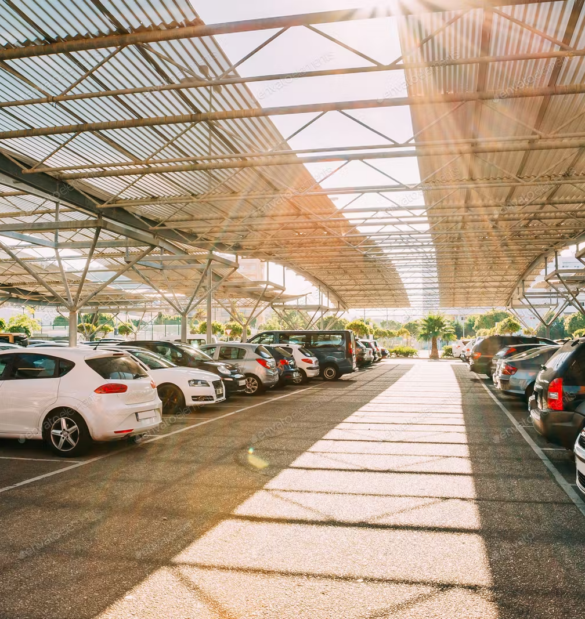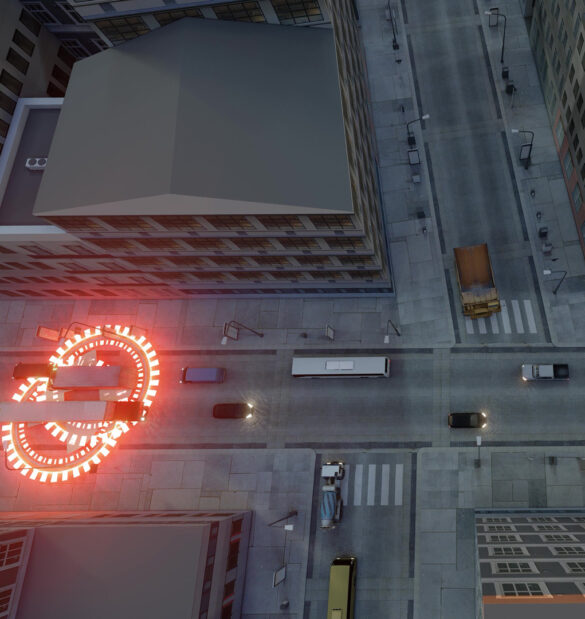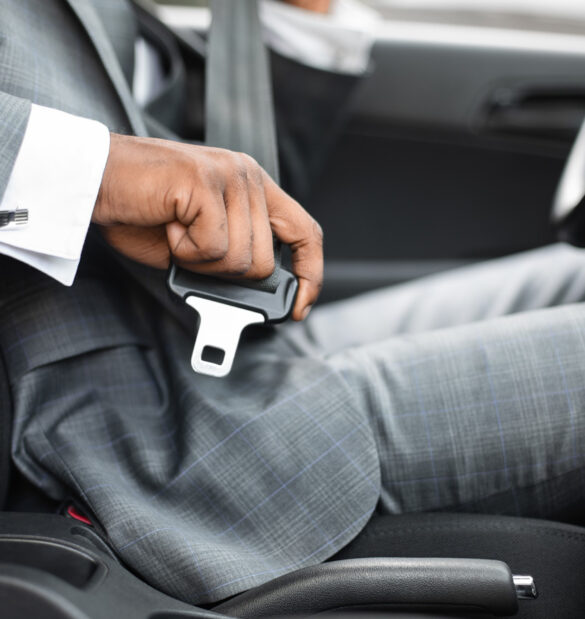Navigation & Autonomous Technology

What is Vehicle Localization?
For any journey, knowing the exact location of a vehicle is key. A driver must be able to place themselves on the road and navigate to their destination as efficiently and safely as possible.
In its broadest sense, Vehicle Localization is the process of locating a vehicle in a particular place or environment.
For an autonomous vehicle to navigate to its destination, the vehicle has to localize itself on the road with precise, centimeter-level accuracy at every minute of its journey, no matter the weather, time of day, or terrain.

ADAS and AVs Cannot Navigate Safely Without Accurate Localization
Localization is a critical requirement for automated navigation.
At present, ADAS and AV systems are based on models that operate like humans to get from one place to the next. Navigational skills are critical in:
- Map Creation and Tracking
- Route Planning
- Obstacle Detection and Avoidance
Sensor systems are at the root of vehicles’ abilities to be autonomous and deliver pinpoint localization and path planning.
ADAS and AV systems can use GPS to geolocate with latitude and longitude coordinates to represent their physical locations in space. However, issues with reliability render it a necessary but insufficient sensor on its own.
GPS Tracking Hardware for ADAS Systems
1. Improved Route Planning Software:
Current GPS tracking hardware can use AI and navigation data to direct drivers to roads where hard-braking is less likely.
This technology is predicted to eliminate 100 million hard-braking incidents every year.
There are other features to improve the safety, performance, cost and carbon footprint of driving, such as notifications for busy areas and navigation to more eco-friendly routes based on information of road congestion and incline.
2. No Data Needed:
GPS navigation for cars does not require a data connection to plan a route, since the data is already stored within the system. However, GPS does need a connection for centimeter-level accuracy.
3. ADAS Combined with GPS:
More recent GPS car navigation systems implement safety features such as forward collision warnings and lane departure alerts. They can also lead drivers to efficient detours if there are collisions or traffic due to bad weather.
GPS is only the beginning. GPS is not suited to high-fidelity navigation needs.

Next-Gen Localization is Crucial to Improve Automotive Navigation Systems
84% of drivers feel that advanced driver assistance systems (ADAS) don’t promote safe driving at all, and could actually lead to a preventable collision.
To keep up with consumer needs and expectations, as well as gain their full trust, automakers and suppliers must ensure superior safety and performance of their ADAS and AV systems—this includes exceeding the safety bar set by human drivers.
Surface-Level Mapping for Autonomous Vehicles is Not Enough
Because GPS needs strong signals and often-outdated maps, it doesn’t work all the time. Human drivers can adapt, but not ADAS and AV systems. Without subsurface information, automated vehicles are reliant on surface-level data that is less reliable and unique.
1. Roads Change, the Underground Doesn’t:
Vehicle surroundings are constantly in flux. Lane markings degrade over time, and potholes lead to road maintenance. ADAS and AV systems should not be impacted by regular road wear and tear.
2. Incomplete Environmental Detection:
Sun glare and inclement weather can impact road visibility for automated systems. This is dangerous when snow or heavy rainfall prevents perception of road markings that help with navigation.
3. Lack of Unique Information:
Highways and suburban streets can look very similar or lack traditional landmarks – such as signs, buildings, or lampposts – that are required for visual localization. Subsurface data, including soil type and density, is as unique as a fingerprint. Combine that with underground infrastructure, and it’s possible to determine a vehicle’s precise location.
As ADAS Evolves, Whose Fault is it Anyway?
The prevalence of performance issues and collisions resulting from inaccurate ADAS systems becomes an even more complicated liability problem for automakers and manufacturers of L2+ automated vehicles.
With highly automated vehicles, it isn’t the driver’s fault if a mistake or collision occurs; it’s the automaker’s. With this in mind, the risk for the automotive industry is much higher, and they need to ensure that ADAS and AV systems always know where they are and where they are going.
SLAM for ADAS and Autonomous Vehicles
Simultaneous localization and mapping (SLAM) technology allows ADAS and AV systems to build a map of a car’s surroundings while simultaneously locating the car on the map.
Working in tandem with GPS and sensing technologies like lidar, forward-facing radar, and camera systems, SLAM technology dramatically improves the overall navigation capabilities of fully and semi-autonomous vehicles. Technology like ground penetrating radar has a particularly high impact on localization accuracy, and it achieves this by scanning and tracking objects below the earth’s surface.
Localization and navigation software are necessary components in order to develop a high confidence in the vehicle’s position at all times.
To surpass the ability of human drivers, vehicles must synthesize data from terrain below the surface into HD maps to better localize the vehicle.
If automakers and suppliers perfect autonomous driving localization, they can fill in the safety and performance gaps of the next generation of autonomous features in vehicles.

How GPR is Revolutionizing Localization
Automakers are moving to radically improve localization for an automated driving experience customers can trust.
True, Intuitive Understanding of a Road Environment
While some roadways like highways don’t vary much above the surface, localization is about a lot more than what meets the eye.
Empowered by localization technologies that collect data beneath the road’s surface, vehicles can detect when a lane is forking or merging, plan lane changes, and determine paths even when markings aren’t clear. This is essential to safe automated driving in poorly maintained road environments, including highways.
This is why GPR’s Ground Positioning RadarTM was developed. It is a system that uses ground penetrating radar and underground data mapping technology to improve vehicle positioning and navigation abilities radically.
GPR helps automakers make their localization and navigation technologies precise and accurate so consumers can fully use and trust ADAS and AV systems.
Optimal Sensor Fusion Needs GPR
GPR’s technology enables automated vehicles to locate where they are in the world through subsurface data that are as unique as fingerprints.
Working with the continuously expanding subsurface map, Ground Positioning RadarTM images two to three meters below the surface to create a more detailed map for advanced localization of a vehicle. Integrating uncorrelated, independent vehicle sensors like GPR’s technology into the tech stack guarantees more robust and reliable ADAS and AV systems.
